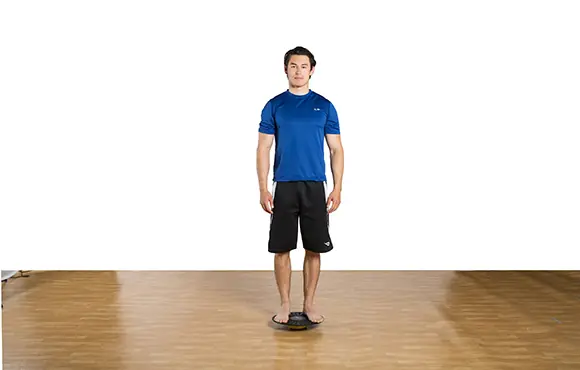We've teamed up with the medical experts at Healthline, a provider of health information, to not only identify the most common problem areas for runners, but to also give you treatment and prevention tips so you can get back on your feet with minimal fuss.
Shin Splints
1 of 6
If you start to feel pain in your front, lower leg, there's a good chance you have shin splints. Shin splints are a stress injury, usually the result of overuse, and can be either muscle or bone-related which makes them difficult to treat. Most, however, are bone-related, especially for runners. In other words, the constant pounding of your feet has made your shinbones painfully swell.
Treatment: Experts agree that treatment requires a full hiatus from running until the pain is gone (brutal, we know). To speed up the process, ice and elevate your shins to reduce any swelling. Anti-inflammatory medication like Advil can also help, but always consult your doctor first.
Prevention: Aggressively upping your mileage is the most common cause of shin splints in runners. Instead, slowly build your way up, even if you're not experiencing any pain. If you have reoccurring shin splits, the injury may be more serious and point to a stress fracture. Now it is definitely time to consult your doctor.
Read More
Running ArticlesHeel Pain
2 of 6
Heel pain is more formally known as plantar fasciitis, meaning an inflammation in the foot. To the average runner, this feels like a sharp, tight or painful sensation at the base of the foot, though it can extend to your arch, too.
It's usually caused by running on hard surfaces without appropriate support, which results in the connective tissue in your sole pulling and even microscopically tearing.
Treatment: You will need to decrease your mileage until the pain goes away. In the meantime, try rolling a tennis ball or a cold can (yes, it may hurt) under your arches and heels for relief. Calf stretches and toe scrunches will also help you build a stronger support system for your foot.
Prevention: If you're running on pavement day after day, it might be time to scout out a foot-friendlier route. Also consider investing in stability shoes with extra cushioning.
Read More
Running ArticlesAchilles Tendinitis
3 of 6
Achilles tendinitis occurs when the tissue that connects your heel to the muscles in your lower leg is inflamed. You usually feel pain around the heel and there may be some visible surface swelling. A naturally flat foot, a shoe without proper support or having tight calf muscles can all cause achilles tendinitis. Upping your mileage too quickly can be another contributing factor.
Treatment: Treating achilles tendinitis can be especially frustrating because the blood flow to that area is minimal, giving you a longer wait time until you're fully recuperated. Resist the urge to jump back into training too soon and use the R.I.C.E. strategy for treatment: rest, ice, compression and elevation.
Prevention: Pay special attention to your calves during pre and post-run stretches. Also take a few minutes before each run to warm up with a brisk walk.
Read More
Running ArticlesIT Band Syndrome
4 of 6
IT Band Syndrome (ITBS) is a painful injury characterized by a sharp, stabbing sensation in the side of your knee. You usually feel this pain when your foot strikes the ground or when you turn a corner. This is because the tendon that connects your knee to your hip is inflamed or very, very tight.
Treatment: Foam rolling is a great way to treat ITBS since it will loosen up your muscles and increase blood flow to the area. Focus on your quads and hamstrings and roll verrryyy slowly—hurts so good!
Prevention: Preventing ITBS is all about building strength in the surrounding muscles. Focus on exercises tailored to your hips, quads, glutes and hamstrings.
Read More
Running ArticlesRunner's Knee
5 of 6
Of all the parts of your body that take a hit while running, your knees are one of the worst off. Knee pain in runners is so common that it's simply called runner's knee. This pain is usually located around or behind the kneecap and—you guessed it—typically affects those who regularly run on hard surfaces or run downhill.
Treatment: A strict icing regimen is key to treating runner's knee. Try 20 to 30 minutes every three to four hours for two to three days. Icing will help with the immediate pain and the deeper problem of your irritated cartilage. It's best to temporarily stop running or at least decrease your mileage until you are able to fully bend and straighten your knee without any discomfort.
Prevention: Sometimes runner's knee is caused by a muscle imbalance. Work on strengthening your hamstrings, calves and quads to lesson the load on your kneecap.
Read More
Running ArticlesGet ACTIVE on the Go


Couch to 5K®
The best way to get new runners off the couch and across the finish line of their first 5K.
Available for iOS | Android






Discuss This Article